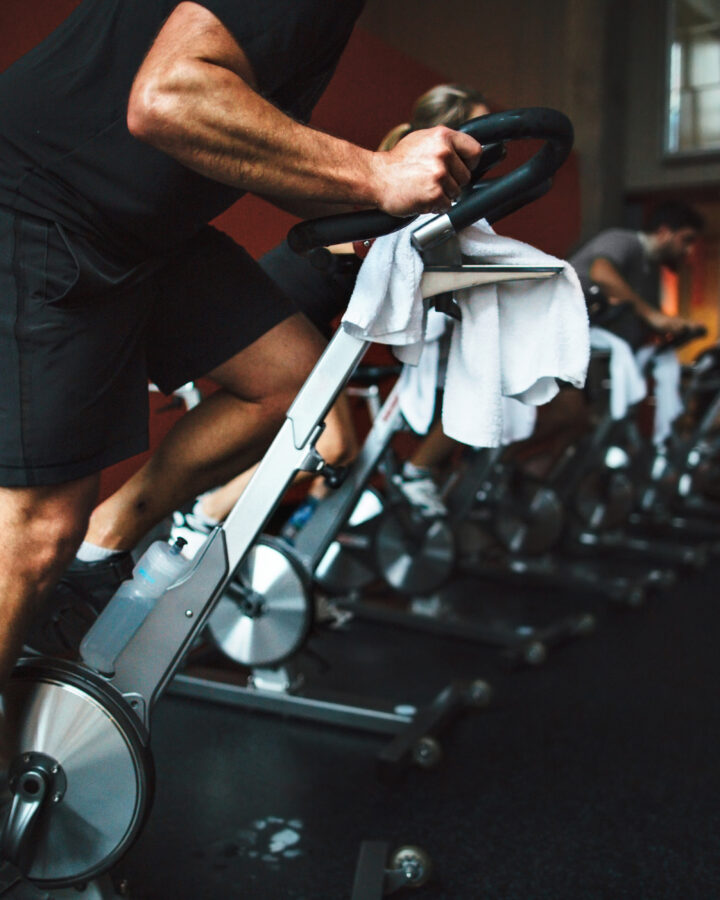HIIT for Longevity: How High-Intensity Intervals Boost Heart Health and Extend Life

If you’re looking for an efficient way to improve [hahrt helth]nounThe overall condition and function of the cardiovascular system, including blood pressure, cholesterol, and arterial health; critical for longevity and disease prevention.Learn More, boost endurance, and optimize [lon-jev-i-tee]nounLiving a long life; influenced by genetics, environment, and lifestyle.Learn More, High-Intensity Interval Training (HIIT) is one of the best options.
Research shows that HIIT increases [vee-oh-too maks]nounA measurement of how much oxygen your body can use during exercise.Learn More (one of the key indicators of longevity), enhances cardiovascular fitness, improves [in-suh-lin sen-si-tiv-i-tee]nounHow effectively your body uses insulin, which regulates blood sugar levelsLearn More, lowers blood pressure, and supports metabolic function, with particularly significant benefits for people at higher risk for [hahrt dih-zeez]nounConditions affecting heart health and circulation.Learn More and diabetes.
However, while HIIT is undeniably powerful, it’s not a one-size-fits-all solution. Let’s break down what makes HIIT so effective, who benefits the most, and how to do it the right way to maximize heart health while minimizing risks.
What Makes HIIT So Effective?
HIIT is not your typical cardio session. Unlike steady-state exercise, like jogging or cycling at a consistent pace, HIIT alternates short bursts of intense exercise (20-60 seconds) with periods of lower-intensity movement or rest. This on-off rhythm forces the cardiovascular system to adapt quickly, improving how efficiently the heart pumps blood and oxygen to muscles.
The Science:
- Boosts VO₂ Max: HIIT has been shown to significantly improve peak oxygen uptake (VO₂ max), a key measure of heart health and endurance, on par with or greater than moderate-intensity continuous training (MICT), depending on the duration and population studied.
- Improves Cardiovascular Fitness in Stroke Survivors: A study found that stroke survivors engaging in HIIT experienced greater improvements in cardiovascular fitness compared to those performing steady-state cardio, though not necessarily double the improvement.
- Lowers Blood Pressure and Enhances Metabolic Health: HIIT has been shown to reduce blood pressure, improve blood sugar control, and support insulin sensitivity, especially in individuals with obesity, prediabetes, or hypertension. However, in some cases, these benefits are comparable to those of MICT, meaning consistency matters more than exercise intensity alone.
Who Benefits Most from HIIT?
While HIIT is a powerful training method for heart health, some people see more pronounced benefits than others.
- People at higher cardiovascular risk (obesity, diabetes, high blood pressure) tend to see the greatest improvements in insulin sensitivity, blood pressure, and VO₂ max with HIIT. But you must consult your doctor first if you fall in this category.
- Healthy, active individuals can also benefit, using HIIT to maintain cardiovascular function, improve endurance, and lower [in-fluh-mey-shuhn]nounYour body’s response to an illness, injury or something that doesn’t belong in your body (like germs or toxic chemicals).Learn More.
- Older adults may benefit from HIIT as long as the intensity is adjusted appropriately, as studies show it supports functional fitness and longevity when performed safely.
How to Do HIIT for Heart Health
1) Start Smart: If you’re new to HIIT or have joint concerns, opt for low-impact options like rowing, cycling, swimming, or incline walking.
2) Time It Right: Aim for 15-30 minutes, 1-2 times per week, with bursts of 20-45 seconds of intense effort, followed by 30-60 seconds of [ak-tiv ri-kuhv-uh-ree]nounGentle movement between workouts to aid in muscle recovery.Learn More (walking, slow pedaling, or complete rest).
3) Turn it up: Try the “Norwegian 4×4” method, an interval protocol that’s been shown to improve VO2 Max. Warm up for about 10 minutes, and then do four intervals on the cardio machine of your choice, a rowing machine or fan bike, which uses both arms and legs at the same time, is easiest for creating a max effort. Go as hard as you can for two minutes, holding back nothing, then rest completely. Repeat four times. Over time, increase the amount of time each max effort interval lasts. Once a week is all you need, along with 45-minute zone 2 workouts 3 times a week.
4) Balance It Out: HIIT is effective but intense. Overdoing it can lead to elevated [kawr-tuh-sawl]nounA hormone that helps manage stress, energy, and alertness.Learn More levels, increased injury risk, and overtraining. Recovery days matter.
What to Watch Out For
HIIT is highly effective, but it’s not for everyone.
- High Blood Pressure: Because HIIT spikes heart rate and blood pressure, individuals with uncontrolled hypertension, heart disease, or a history of cardiac events should consult a doctor before starting.
- Pushing Too Hard: While HIIT can be safe when properly structured, pushing too hard without adequate recovery can lead to fatigue, stress on the nervous system, and increased risk of injury. Done correctly, 2x week is the max for most people, but 1x a week is really all you need. On the days in between, do 30-45 minute session of zone 2 to de-stress the body and further build cardio capacity
- Sustainability: HIIT may not be the best choice for those who struggle with intense workouts. Moderate-intensity exercise can be just as effective if done consistently.
HIIT is one of the most time-efficient, science-backed ways to improve cardiovascular health, but it’s not the only way. If HIIT feels too intense, brisk walking, steady-state cardio, and [strength tray-ning]nounResistance-based exercise to build muscle and support healthy aging.Learn More also offer major heart benefits, and they may be easier to sustain over time.
The best exercise? The one you can do consistently. Move often, challenge your heart, and give it the recovery it needs.
Read This Next
The information provided in this article is for educational and informational purposes only and is not intended as health, medical, or financial advice. Do not use this information to diagnose or treat any health condition. Always consult a qualified healthcare provider regarding any questions you may have about a medical condition or health objectives. Read our disclaimers.

